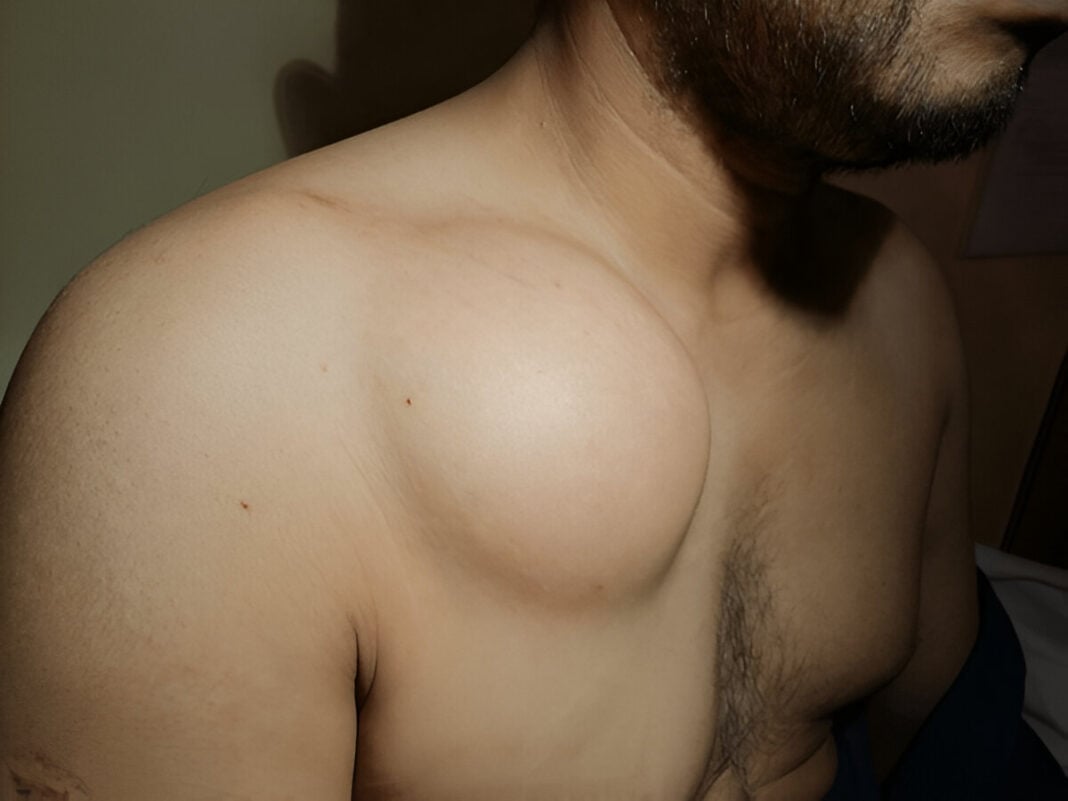Finding a lump or bump on your skin can be alarming. While most lumps are harmless, it’s natural to want to understand what they are and whether they require medical attention. One common type of lump is a lipoma, but there are several other types of skin lumps that can look similar. Knowing the differences between lipomas and other skin lumps can help you make informed decisions about your health and when to seek professional advice.
What Are Lipomas?
Lipomas are benign (non-cancerous) growths made up of fat cells. They usually develop just under the skin and feel soft, doughy, and movable when touched. Lipomas are generally painless and slow-growing. They can occur anywhere on the body but are most commonly found on the neck, shoulders, back, abdomen, arms, and thighs (Mayo Clinic Staff, 2023).
Why do lipomas form? The exact cause isn’t fully understood, but genetics seems to play a role. Lipomas tend to run in families, and they usually develop in middle age or later. While they are generally harmless, some people may opt for removal for cosmetic reasons or if the lipoma causes discomfort or restricts movement (Bolognia, Schaffer, & Cerroni, 2018).
Common Characteristics of Lipomas
- Soft and rubbery texture
- Easily movable under the skin
- Usually painless
- Slow growth over months or years
- Typically small but can grow larger (up to several centimeters) (James, Berger, & Elston, 2015)
Other Types of Skin Lumps to Know About
Not every lump is a lipoma. Several other skin lumps might look or feel similar, but they have different causes and implications. Here are some common ones:
- Cysts
What they are: Cysts are sac-like pockets filled with fluid, pus, or other material. The most common type near the skin’s surface is the epidermoid cyst (sometimes called a sebaceous cyst) (Weir & Rotimi, 2016).
How they differ: Cysts tend to be firmer and may have a central punctum (a small opening on the skin surface). They can become red, swollen, and painful if infected or inflamed, unlike lipomas which rarely cause these symptoms (James et al., 2015).
- Fibromas
What they are: Fibromas are benign tumors composed of fibrous or connective tissue.
How they differ: Fibromas are usually firmer and less mobile compared to lipomas. They are also less common and may appear in specific locations like the skin or internal organs (Bolognia et al., 2018).
- Lymph Nodes
What they are: Lymph nodes are part of the immune system and can swell due to infections or other conditions.
How they differ: Enlarged lymph nodes tend to be tender and can be firm or rubbery. They are usually located in typical areas such as the neck, armpits, or groin. Unlike lipomas, they might be associated with systemic symptoms like fever or fatigue (James et al., 2015).
- Dermatofibromas
What they are: Dermatofibromas are small, firm, raised nodules that commonly develop on the arms or legs.
How they differ: They feel harder and are fixed to the skin, unlike lipomas that move freely. They often have a darker color and may dimple when pinched (Bolognia et al., 2018).
- Malignant Tumors
What they are: These are cancerous growths such as sarcomas or skin cancers.
How they differ: Malignant lumps often grow rapidly, may be painful, fixed to underlying tissues, ulcerated, or bleed. Any suspicious lump that changes quickly or has unusual features should be evaluated by a healthcare provider promptly (National Cancer Institute, 2021).
How to Tell the Difference: A Quick Guide
| Feature | Lipoma | Cyst | Fibroma | Lymph Node | Dermatofibroma | Malignant Tumor |
|---|---|---|---|---|---|---|
| Texture | Soft, rubbery | Firm, sometimes fluctuant | Firm | Firm or rubbery | Hard | Hard or irregular |
| Mobility | Freely movable under skin | Less mobile | Less mobile | Fixed or mobile | Fixed to skin | Usually fixed |
| Pain | Usually painless | Can be painful if infected | Usually painless | Often tender | Usually painless | May be painful |
| Growth Rate | Slow | Slow to moderate | Slow | Varies with cause | Slow | Often rapid |
| Surface Changes | None | Possible punctum or redness | None | None | Dimpling on pinching | Ulceration or bleeding |
When to See a Doctor
While lipomas are benign and usually don’t require treatment, it’s important to get any new lump checked by a healthcare professional, especially if you notice:
- Rapid growth
- Pain or tenderness
- Changes in color or texture
- Ulceration or bleeding
- Fixation to skin or underlying tissue
- Symptoms like fever, weight loss, or night sweats
Your doctor may perform a physical examination, imaging tests such as ultrasound or MRI, and sometimes a biopsy to confirm the diagnosis and rule out malignancy (Mayo Clinic Staff, 2023).
Treatment Options
Most lipomas don’t need treatment unless they cause discomfort or cosmetic concern. When treatment is desired, options include:
- Surgical removal: Complete excision under local anesthesia.
- Liposuction: Minimally invasive option to remove fatty tissue.
- Steroid injections: May shrink smaller lipomas but not commonly used (Bolognia et al., 2018).
Other lumps require treatment specific to their type. For example, infected cysts might need antibiotics or drainage, and malignant tumors require oncologic evaluation and treatment (National Cancer Institute, 2021).
Finding a lump can be unnerving, but understanding the differences between lipomas and other skin lumps can provide reassurance and guide you toward appropriate care. Lipomas are usually soft, painless, and slow-growing, whereas other lumps like cysts, fibromas, or malignant tumors have distinct characteristics and sometimes require urgent attention. If you ever have doubts about a lump, don’t hesitate to seek medical advice. Early evaluation ensures peace of mind and the best possible outcomes.
References
- Bolognia, J. L., Schaffer, J. V., & Cerroni, L. (2018). Dermatology (4th ed.). Elsevier.
- James, W. D., Berger, T. G., & Elston, D. M. (2015). Andrews’ Diseases of the Skin: Clinical Dermatology (12th ed.). Elsevier.
- Mayo Clinic Staff. (2023). Lipoma. Mayo Clinic. https://www.mayoclinic.org/diseases-conditions/lipoma/symptoms-causes/syc-20374495
- National Cancer Institute. (2021). Sarcoma Treatment (Adult) (PDQ®)–Patient Version. https://www.cancer.gov/types/sarcoma/patient/sarcoma-treatment-pdq
- Weir, J., & Rotimi, O. (2016). Common benign soft tissue tumors: Lipomas, fibromas, and cysts. American Family Physician, 93(3), 181-189.










